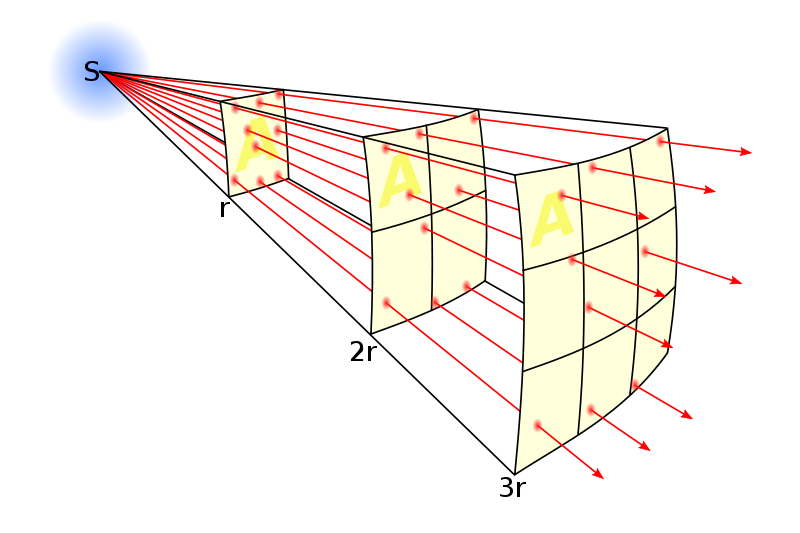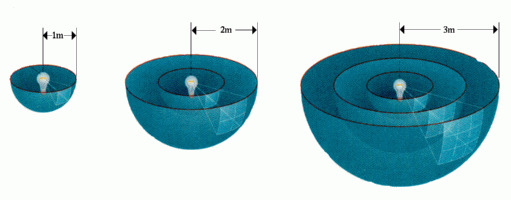Ask Ethan # 61: how far does gravity go?
Despite the reputation of power with an infinite range of action, the real situation in the Universe imposes restrictions on it.
In my dreams and visions, I see a line, on the other side of which are green fields, beautiful flowers, beautiful white ladies, stretching their hands to me through this line, but I cannot reach them. I always fall before I get to the line.
- Harriet Tabmen
And again the end of the week, which means that I choose the questions from the ones you sent. One of my readers, who has been following my publications since 2008, when I started this blog, Frank Barge, asks:
If the Universe is not infinite, what can be said about the range of the gravitational and electromagnetic forces?
')
Very difficult question, if you think about it. Let's first consider what we know about gravity and electromagnetism.

Consider not the magnitude of the forces, or the nature of attraction / repulsion, but the fact that at long distances these forces change according to the inverse square law, that is, if the distance between two objects is doubled, the force of their interaction decreases 4 times. This is a special relationship to which not only gravity and electromagnetism obey, but also other important physical properties, such as light, sound and radiation.
What is it so special? Consider how any of the physical properties — for example, the light of a star — propagates as it moves away from the source.

They spread radially outward, forming a sphere, therefore the impulse of the same light, for example, spreads in a constantly expanding spherical shell. What's so special about it? The fact is that the surface of a sphere is considered according to the formula A = 4πr 2 , where the important part is “r 2 ”.
After all, if the area expands as r 2 , and the force falls as r -2 , then the physical phenomenon will have an infinite range of action. We can draw a sphere of any size with the center in the object - the source of gravity (mass), the source of electricity (charge), the source of light (star), etc. - and the total amount of some substance participating in the interaction on the surface of the sphere, be it force or flow, will be the same if we sum up all parts of the sphere. This remains true not only for the whole sphere, but also for any of its solid angle!

This is what is meant by the infinite range of force.
But the Universe - at least the visible part accessible to us - is not at all infinite. On the contrary, despite the fact that we see light from billions of galaxies, it is not such a large number. The view on her is beautiful and amazing (seriously, choose a time to look at her). But despite all the magnificence, one should not confuse vastness with infinity.

Of course, it all looks very big. But if you think that there are billions of times more sand grains on the Earth’s beaches than there are galaxies in the observable Universe - and then it no longer seems so big. Due to the fact that the universe is not eternal, and there is only 13.8 billion years since the Big Bang, we can not see more than we see - the light (and gravity) just did not reach us.

More precisely, I did not manage to cover a greater distance, spherically spreading from the source. We have the same thing - gravity from each particle of the body, from the planet, from the galaxy, spherically propagates at a speed of gravity (equal to the speed of light) with a force incident in proportion to ~ 1 / r 2 (but propagating with increasing area ~ r 2 ) ever since the beginning of "our universe."

Do not confuse the observed part of the Universe - that is achievable by light, gravity, other phenomena with a finite speed - with the whole Universe, huge (possibly infinite), including the part that is not included in the observed.

The red dot on the left is the observable part of the Universe immediately after inflation. On the right is the whole Universe at the same moment (red field).
We have every reason to believe that the entire Universe is much larger than the observed parts, but our signals will not reach it, because we emit them during a finite period of time, and their speed of propagation is also finite.
But this is not a bug of the universe, but a feature!

Imagine if the signals spread infinitely quickly, or we could feel gravity, see the light or somehow perceive things that are far away from us than we can see now.
We, and many parts of the Universe, would catastrophically twitch in different directions, drawn by incomprehensible forces. The whole night sky would be filled with sources of light that should not reach our eyes.

We ourselves would emit much more power than allowed in physics. The laws of physics would break, GR would not describe our world, because of an overabundance of energy density in the Universe, a catastrophe would have happened, and - due to gravitationally bound energy - the Universe would have recollaps pretty soon.

Quoting Egan from Ghostbusters: “That would be bad.”
Instead, gravity, electromagnetism, and all the other forces of “unlimited action” can act at such distances as they travel, traveling at the speed of light in the universe, 13.8 billion years old, expanding 46 billion light years in accordance with our unique history. . And this - since the speed of gravity and light are identical - just equal to the size of the observed Universe in all directions.
This is how gravitational and electromagnetic forces extend. Thank you for the difficult but interesting question, and if you want to get an answer to your question, send it to me .
Source: https://habr.com/ru/post/395419/
All Articles